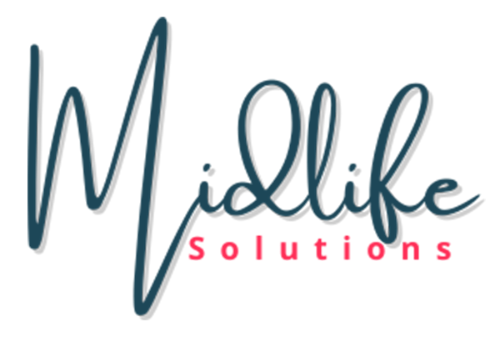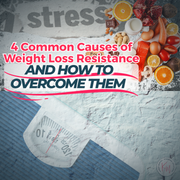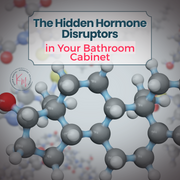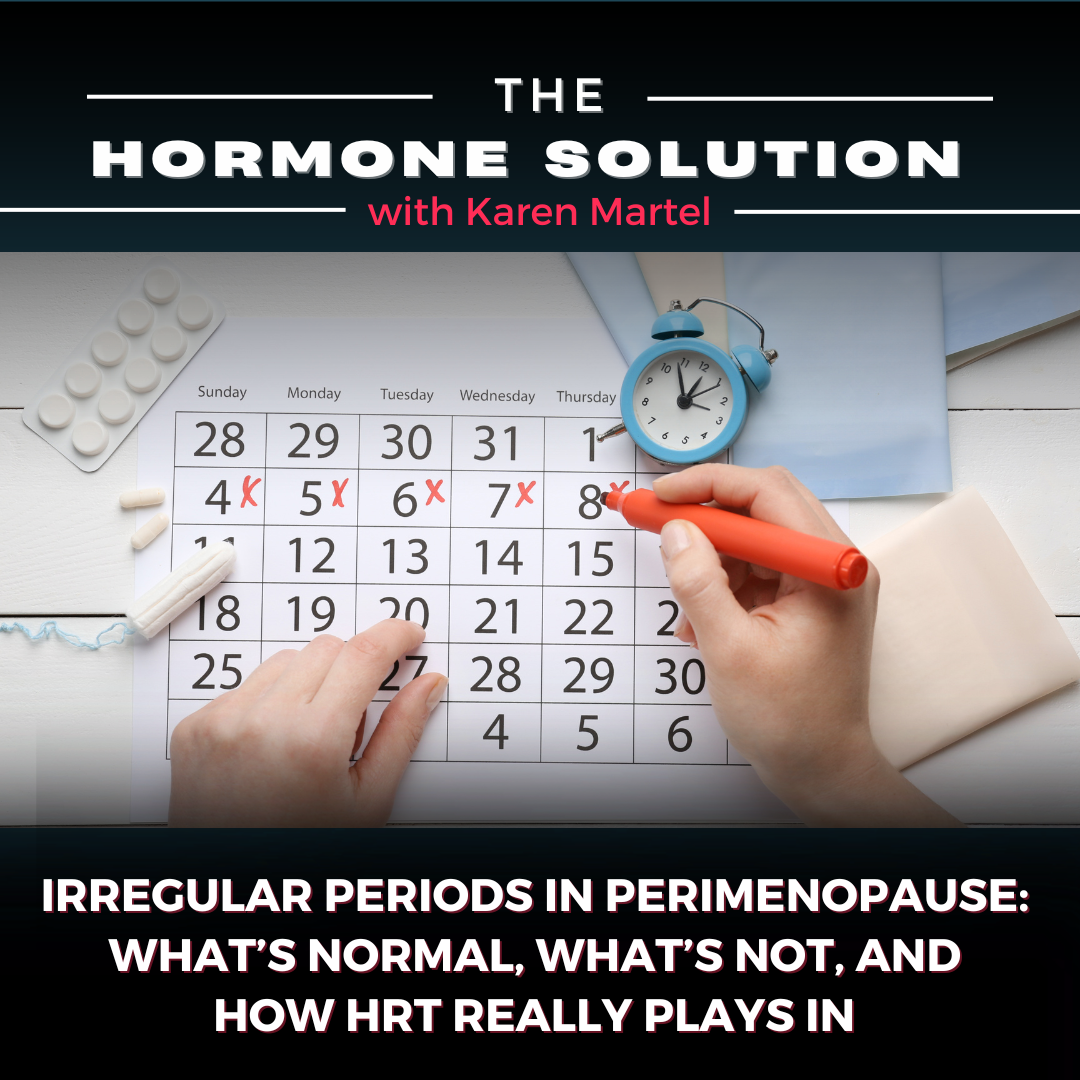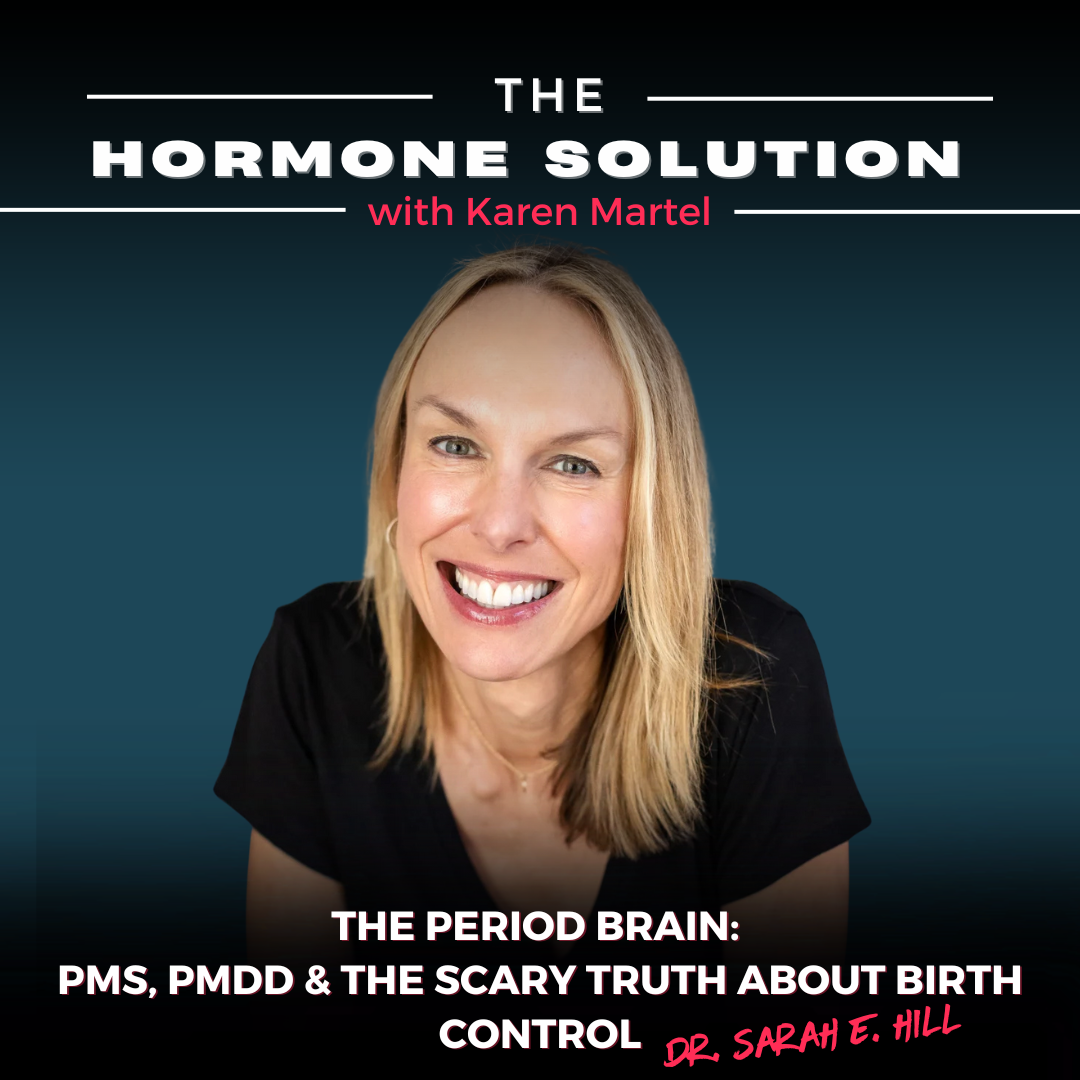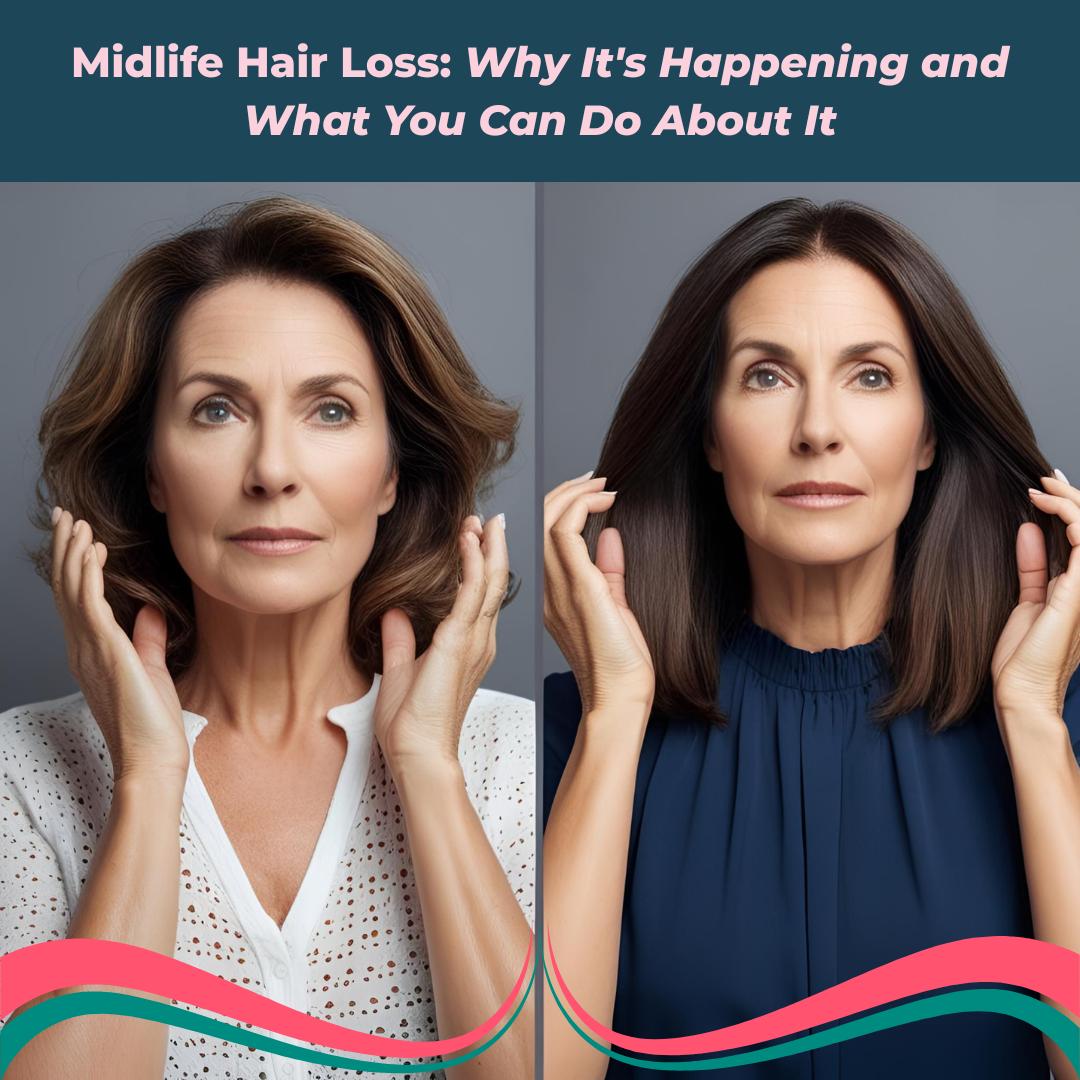
Midlife Hair Loss: Why It's Happening and What You Can Do About It
Fight Hair Thinning Hair loss in midlife is more than just a cosmetic concern—it can feel shocking, deeply personal, and downright demoralizing. You wake up one day, and your once-thick ponytail is looking a little...wimpy. There’s more hair in your brush, your drain, and—worst of all—less on your head. And while it's easy to blame age or genetics, the truth is: hormones are often the sneaky culprits behind midlife hair thinning. But here's the good news—you’re not powerless. With the right support, strategies, and a better understanding of what's actually going on, you can slow, stop, and even reverse the loss. Let’s break it down.
 The Hormone-Hair Connection
The Hormone-Hair Connection
1. Estrogen (a biggie)
Estrogen is a key player in hair health—it keeps strands in their growing phase longer, improves scalp circulation, and supports follicle vitality. So when estrogen levels drop during perimenopause and menopause? Hair growth slows, strands become finer, and more follicles shift into the shedding phase.
To make matters worse, lower estrogen can tip the hormonal balance toward androgens, like testosterone and DHT, which can miniaturize hair follicles.
It’s no wonder so many women are blindsided. You’ve already got enough going on in midlife—hot flashes, mood swings, sleep struggles—and now your hair starts falling out too?
Yes, it's hard. But no, it’s not hopeless.
With bioidentical hormone therapy, lifestyle shifts, targeted nutrition, and smart topical support, you can bring back healthier, fuller hair—and that sense of confidence that comes with it.
2. Testosterone & DHT
When testosterone is elevated or not being metabolized efficiently, it can convert into DHT (dihydrotestosterone)—a hormone that binds to hair follicles and shrinks them over time. This is a major cause of “male-pattern” thinning in women: receding hairline, thinning at the crown, or diffuse shedding.
Think of DHT as a bulldozer parked on your hair follicles. Not ideal.
3. Thyroid Hormones
Both hypothyroidism and hyperthyroidism can cause hair loss. Low thyroid levels slow down cell turnover and reduce scalp circulation, while high levels can push hair follicles into the shedding phase prematurely. If you're experiencing hair loss plus fatigue, weight gain, or brain fog—it might be time to check those thyroid labs.
 Top Natural Topical Treatments for Hair Loss
Top Natural Topical Treatments for Hair Loss
If your hormones are out of whack, working from the inside is key. But don’t sleep on what you can do from the outside, too. Here are some of the top natural topical ingredients to support hair regrowth and reduce shedding:
1. Caffeine
-
Boosts scalp circulation
-
Blocks DHT effects
-
Found in tonics and shampoos
2. Copper Peptides (GHK-Cu)
-
Stimulates collagen, elastin, and follicle repair
-
Anti-inflammatory and regenerative
-
Look for serums with GHK-Cu
3. Saw Palmetto
-
Natural 5-alpha-reductase inhibitor
-
Reduces DHT on the scalp
-
Use in serums or as part of DHT-blocking blends
4. Rosemary Oil
-
Improves circulation and reduces inflammation
-
Shown to be as effective as minoxidil in some studies
-
Must be diluted with a carrier oil
5. Pumpkin Seed Oil
-
Rich in antioxidants and DHT-blocking properties
-
Use as a scalp oil treatment
6. Niacinamide (Vitamin B3)
-
Enhances blood flow to the scalp
-
Supports hair shaft strength
-
Often combined with biotin or peptides in serums
 Advanced Topical Ingredients for Hair Regrowth
Advanced Topical Ingredients for Hair Regrowth
For those who want to take it up a notch, bioactive peptides and growth factors offer cutting-edge support—especially if you're dealing with more advanced thinning or want to supercharge your results.
 Tocopherol (Vitamin E)
Tocopherol (Vitamin E)
-
Antioxidant that protects follicles from oxidative stress
-
Supports moisture retention and scalp health
 Human-Identical Growth Factors & Peptides
Human-Identical Growth Factors & Peptides
These are lab-made versions of naturally occurring proteins that help your skin and follicles regenerate and thrive. You’ll often find them in high-end scalp serums used in dermatology and trichology clinics.
-
sh-Polypeptide-1 (EGF): Stimulates cell regeneration and follicle activity
-
sh-Polypeptide-11 (KGF): Encourages keratinocyte growth for stronger hair shafts
-
sh-Oligopeptide-2 (IGF-1): Extends the growth phase and revives follicles
-
sh-Oligopeptide-10: Reduces inflammation and modulates immune response (great for autoimmune-related thinning)
-
sh-Polypeptide-9 (VEGF): Increases scalp blood flow by promoting new capillaries
These peptides help reactivate dormant follicles, reduce inflammation, and improve overall scalp health—perfect for reversing midlife hair loss from multiple angles.
Pro tip: Look for multi-ingredient serums like these Hair Growth Serum & Nourish and Flourish Peptide Hair Growth that combine these power players for a synergistic effect—like a caffeine + saw palmetto + rosemary blend. And consistency is key: apply regularly (often daily) for at least 3–6 months to see results.
Nutritional Support: Your hair’s health starts from the inside, so make sure you're getting adequate nutrients. Biotin, iron, vitamin D, zinc, and omega-3 fatty acids are all key players in supporting healthy hair growth.
Stress Management: Stress is a major culprit in hair loss. Find ways to relax and unwind — whether that’s through meditation, yoga, or simply taking a few minutes each day for deep breathing exercises. Keeping cortisol levels in check can really help you keep your hair intact!
While natural and bioidentical options are always our first line of defense, sometimes we need to bring out the big guns—especially when hair loss is more advanced or hasn’t responded to gentler approaches. At our clinic, we do prescribe topical Minoxidil and Dutasteride when appropriate. Minoxidil helps stimulate blood flow and extend the hair growth phase, while Dutasteride works by powerfully blocking DHT at the root (literally). These can be incredibly effective tools when used strategically, especially in combination with hormone balancing and supportive topicals. It’s all about choosing the right plan for your unique hormonal and hair health picture.
 So What Can You Actually Do?
So What Can You Actually Do?
-
Get your hormones tested—especially estrogen, testosterone, DHT, thyroid, and iron/ferritin.
-
Consider bioidentical hormone therapy if estrogen is low.
-
Support your scalp daily with natural DHT blockers and peptides.
-
Reduce stress, improve sleep, and support detox pathways (your liver clears excess hormones!).
-
Use advanced topicals if you want to level up your results without meds like minoxidil.
 Final Thoughts
Final Thoughts
Midlife hair loss is tough—but you’re not crazy, and you’re definitely not alone. The hair you’re losing has a reason—and more importantly, there are solutions.
With the right hormonal support, nourishing topical treatments, and a little patience, your hair can bounce back. And let’s be honest—so can you.

Find Karen Martel on Apply Podcast
Karen Martel is a Certified Hormone Specialist and Transformational Nutrition Coach dedicated to empowering women through their health journeys.
As the host of the popular podcast The Hormone Solution, Karen tackles the complexities of hormonal health, weight loss resistance, and the challenges that come with perimenopause and menopause.
Her mission is to disrupt outdated narratives surrounding women's health, providing reliable information and practical solutions that help women reclaim their vitality.
Tune in to discover how to embrace life's stages while enhancing overall well-being.
